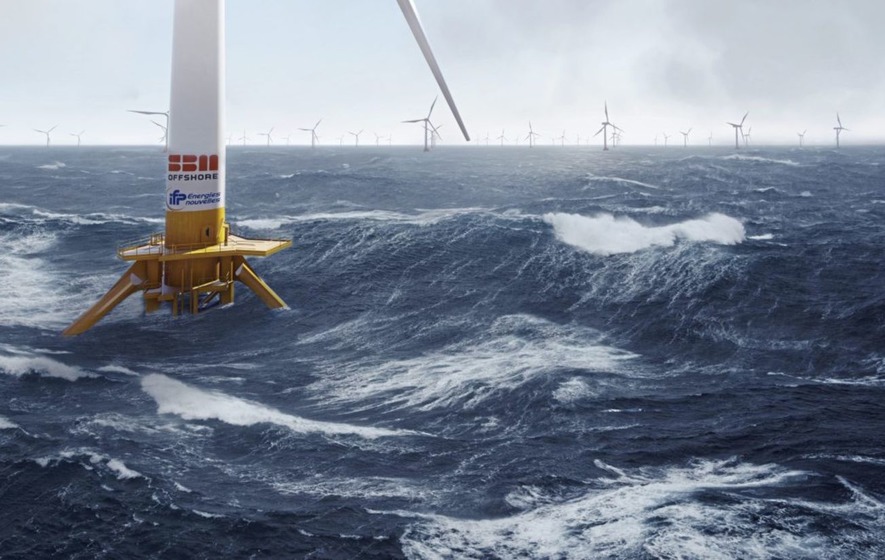
A DUTCH marine engineering specialist wants to develop two offshore floating wind farms just a few miles off the Belfast coastline in what is potentially a £3 billion investment.
SBM Offshore says the project - which involves building up to 25 massive turbines feeding into either the Kilroot or Ballylumford energy plants - would also create 700 jobs and power 500,000 homes in the north by the end of this decade.
But while its early-stage plans have been met with a generally favourable response from Stormont's departments of agriculture, finance and economy, they are unlikely progress without a green light from the Crown Estate, which owns the UK's seabed.
Last year the Crown Estate ran its first auction in a decade for permits to construct offshore windfarms off the UK coastline, and it attracted frenzied interest from domestic and international bidders.
SBM Offshore, which employs 4,500 people worldwide, has been assessing Northern Ireland's coastal potential for around a year, and has already “risked” £500,000 to commission environmental studies on both the Irish and Scottish coastlines.
And the company insists that Northern Ireland's ambition to reduced emissions by 80 per cent by 2050 “just won't be possible without the provision of offshore energy”.
Stormont's recently-published energy strategy has factored in one gigawatt of offshore energy, and SBM's proposal for the North Channel would meet nearly half of that.
“Our two sites would generate a combined 400 megawatts, representing 13 per cent of Northern Ireland's total energy needs and up to 57 per cent of domestic requirement,” said Niamh Kenny, project director with North Channel Wind, which is SBM's subsidiary in Ireland.
She described Northern Ireland as a “sweet spot” for a floating wind farm.
“It's got very good wind speeds, yet it has a benign environment in the sense there are very little waves.
“And where we're building, there is no particularly strong tides either, so the level of availability is much higher than it would be in the north of Scotland and that reduces the price.”
She added: “We believe Northern Ireland will be one of the cheapest places to build floating offshore wind anywhere in the British Isles and hopefully that will be eventually reflected in the overall cost of electricity here.”
Northern Ireland, given its economy's reliance sectors like agriculture, probably won't ever reach net zero, though in 2020 the Committee on Climate Change, the government's climate advisory body, suggested an 82 per cent reduction by 2050 would be “an equitable contribution” for the region.
North Channel Wind is proposing two floating wind farms (the largest would accommodate 15 to 20 turbines while the other would have 5 to 7 turbines), located 12km and 27km from the coasts of counties Antrim and Down, in around 120m of water depth, and located either side of the Stena ferry route between Belfast and Cairnryan.
The company (www.northchannelwind.com) says the project would create “significant supply chain opportunities” including the assembly of the required steel floating devices, logistics, assembly, marine services and construction.
SBM Offshore say sits floating technologies are particularly well suited to the Irish Sea for their significantly reduced environmental impact during installation and operation when compared to conventional turbines whose foundations are on the seabed.
Ms Kenny added: “We are in discussions with the Northern Ireland government, grid operator SONI, energy regulator UREGNI, Renewables NI and the Crown Estate.
“We have already completed our site characterisation and have commenced a scoping exercise in consultation with Daera, which is the first step in applying for a marine licence to build offshore infrastructure.”
Its representatives will be meeting key stakeholders including the fishing community, local interest groups and other marine users over the coming months to gauge reactions, optimise the project and build partnerships which it says will benefit the wider community for years to come.